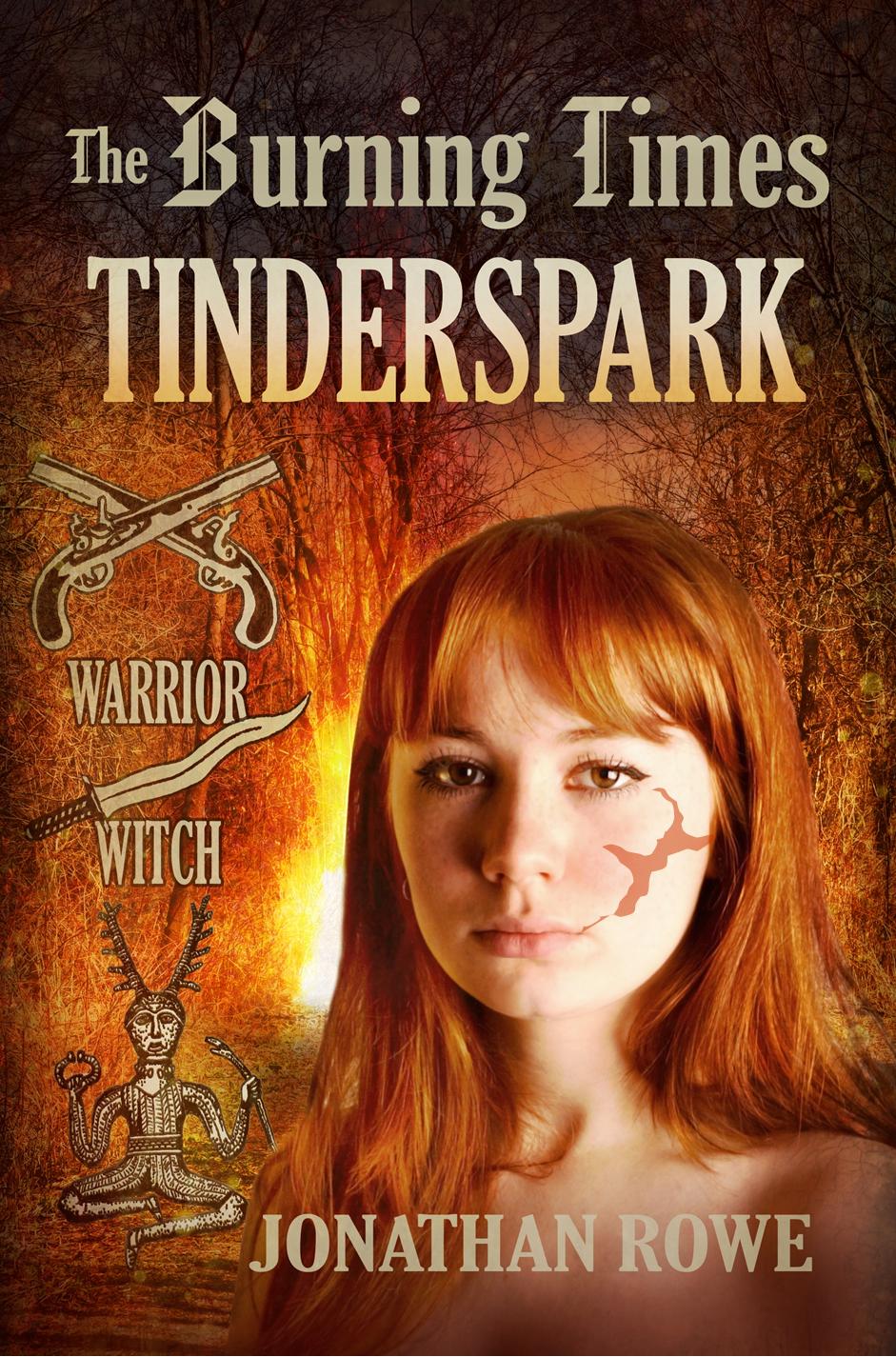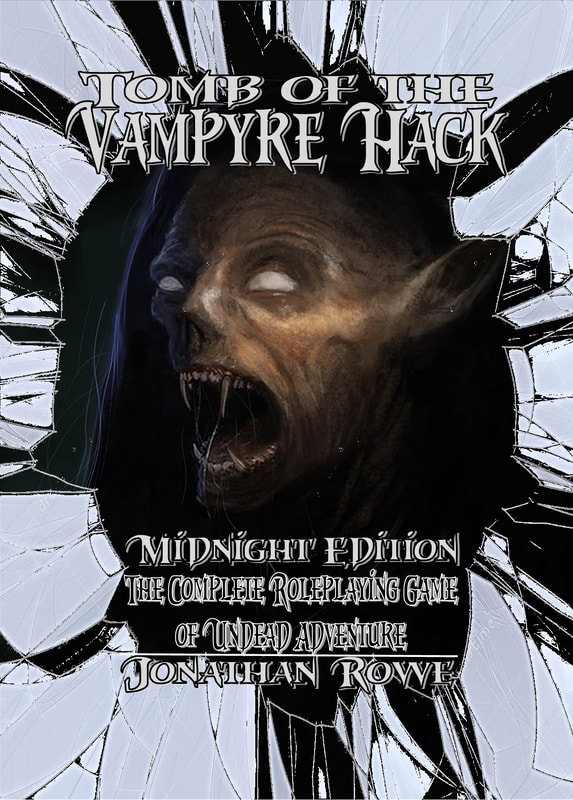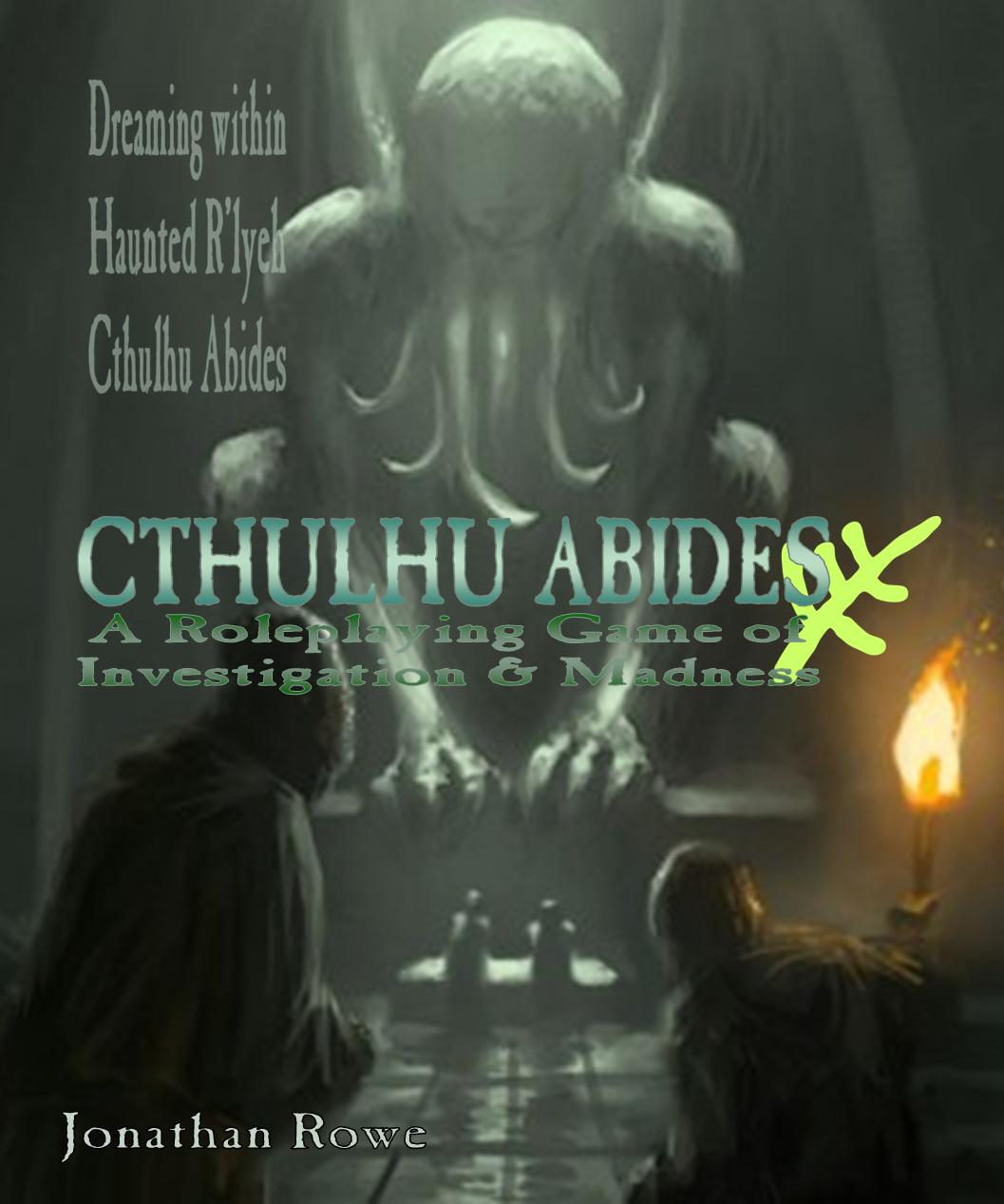|
My indie RPG The Hedgerow Hack has been a modest success - more than modest, really, since it has been picked up by Osprey Games and I've just submitted the MS for a much more innovative and expansive game based on The Hedgerow Hack's quirky legendarium. More news on that in due course! For now, here is a scenario for the original Hedgerow Hack, with a Christmas flavour, pitting mystical Briar Knights against two very unpleasant versions of Santa Claus. There's a lovely physical edition of The Hedgerow Hack but drivethrurpg has a perfectly decent PDF for next to no money at all. If you prefer, you can try this scenario with any Black Hack related system and it lends itself well to OSR retroclones like Labyrinth Lord or Blueholme - or my own The Magus Hack. During the Age of Plagues (1640s and 1650s), strict laws were passed against holding or attending a Christmas church service. Shops and markets were told to stay open on 25 December and soldiers patrolled the streets, seizing any food being prepared for Christmas celebrations. In January 1645, Parliament made clear that Christmas was not to be celebrated but spent in respectful contemplation. This Christmas scenario features the conflict between two Old Gods: King Christmas and his monstrous older brother Lord Yule. When the Puritans ban Christmas during the Age of Plagues, this interrupts a yearly celebration at a Legendary Location that used to empower King Christmas, leading to his defeat by Lord Yule. Enraged, King Christmas enters the Mortal Ages to punish humans, but finds himself bereft of his power and strength. He is arrested by agents of the Witch Harrow and taken to a witches’ prison for breaking the ban on Christmas activities. Lord Yule also enters the Mortal Ages, growing stronger on the mayhem he and his Winter Goblins create. Key NPCsKing Christmas is a majestic giant over 8 feet tall, with the head and claws of a lion and a silver mane. He wears a long robe of deep green and a hood lined with ermine. He embodies medieval monarchy: proud, bombastic and haughty – although events in this story will change his character. He draws power from the gifts left for him at sacred sites like Hollin Howe (Act II) or left on hearths overnight. He is unaffected by Cold Iron but completely disempowered by the Dolour.
Lord Yule serves the Dark, so if the Malignity Die ever exhausts, he appears to assault the PCs. Lord Yule and his Winter Goblins cannot enter a home or camp where the occupants have exchanged gifts within the last 25 hours. The ‘gift’ doesn’t have to be physical, but it must be something significant either to the giver or the receiver. Charlie is a 12-year-old boy from 19th century London, brought back through time by Peterkin, a Gypcean boy with a magical talent for traveling the Hedge. Charlie’s parents are in debtors prison, so he lives at a lodging house run by a friend of his family and works to pay rent. He carries his dearest possession: a letter from his parents expressing a confident faith they will be released and will spend Christmas together. Charlie is a brave and curious boy but at the start of the adventure he has been abducted by Dixon’s Deserters (Act II). Charlie will not be killed during this adventure: he has 4hp but if he is reduced to 0 he is simply captured or runs away and becomes lost. Prelude: Through The HedgeAs usual the Briar Knights are summoned by the Light and sent through the Hedge. This is like walking a narrow hedge maze with wintry branches hemming the Briar Knights in on both sides. At clearings in the maze, there are mysterious visions that set out their mission.
Act I: The Realm of WinterfaeNo map is provided of Winterfae or Christmas Castle. This is a magical landscape and the Briar Knights will find themselves where they need to be, regardless of what direction they take. The Briar Knights arrive in the Age of Fable in a realm called Winterfae. It’s a snowy wonderland of pines, majestic frozen waterfalls, gleaming icicles and sudden blizzards. Over the treetops can be seen Christmas Castle, but once the PCs arrive there they will find the castle in ruins, with signs of a violent siege that ended with the collapse of its gate. The Malignity Rating is 2 (d10). Winter Goblins Lord Yule’s Winter Goblins roam the surrounding woods and the corridors of Christmas Castle. These vicious creatures were part of Lord Yule’s invading army and attack on sight.
The Elfin Workshops King Christmas’ Craft Elfs toiled in his workshops, turning gifts from his mortal devotees into weapons for his war against Lord Yule. The workshops now stand empty, but PCs might discover 1d4 partially-made magical Treasures. Some Craft Elfs remain in hiding in the workshops; they are less vicious than the Winter Goblins but still inclined to treat Briar Knights as invading enemies. 1d4+1 Craft Elfs: HD 1, 4hp, d4(2)dmg, AP1: create traps Craft Elfs create traps out of any junk to hand and at the start of an encounter every opponent must test WIS or DEX to avoid a trap:
If defeated, Craft Elfs turn into mannequins of holly and mistletoe. If captured or parlayed with, they can reveal the same information as the Winter Goblins, but also that they have no love for their King, who enslaved them in ages past. King Christmas lost his power recently when mortals stopped offering gifts to him, which allowed Lord Yule to gain the upper hand. The King went to exact revenge on the mortals who betrayed him and many Craft Elfs fled with him. One Elf named Rimenose remains perversely loyal to King Christmas (“he was a cruel master, but he was fair!”) and will accompany the Briar Knights if they offer to find the King. He could fashion on partially-made Treasure into a working one (roll randomly) that can be brought to any Age where King Christmas is present. The Midwinter Throne King Christmas’ throne room has been looted by Goblins but the ice throne remains untouched. Any Fae character sitting on it will see a vision of the mortal boy Charlie in the company of dangerous looking soldiers (Act II, Dixon’s Deserters), of Lord Yule dancing on the rooftops of a town and King Christmas imprisoned in a dungeon (Act III). The Solstice Tower The highest turret contains a portal to the Mortal Ages: a tapestry depicting a winter glade of holly trees. If examined closely, snow falls and shadows lengthen in the scene and characters stepping into it appear as woven images in the clearing. The portal is defended by 1d4+1 Winter Goblins awaiting Lord Yule’s return but if the PCs have befriended Rimenose he could negotiate safe passage. Act II: The Age of PlaguesIt is the year 1645. Christmas has been banned across the Old Shires. Midwinter approaches and no carols are sung and no gifts left out on the hearth for the pagan spirits of the season. Briar Knights arrive at a Legendary Location: Hollin Howe (MW). This is the bare summit of a hill, ringed by holly trees. The Portal to Winterfae appears as a column of swirling snowflakes, even on a clear day. A path leads to Yeavering Farm; footprints in the snow show traffic coming from Aster’s Camp. Monstrous hoof-prints in the snow head off in the direction of The Copper Kettle Inn. Travelling through the woods risks encounters with more Winter Goblins or Fugitive Elfs; encountering Dixon’s Deserters is a mandatory encounter. The Malignity Rating in the woods is 1 (d12) going up to 3 (d10) by night. If Rimenose accompanies the Briar Knights, he will cloak himself in a Glamour that makes him seem like an ugly human urchin - but this is dispelled by Cold Iron or the Witch-Harrow's Dolorous Word. I'll get round to creating a map for the woods and the locations around Hollin Howe, but they are few enough that I think most GMs can 'wing it.' Similarly, floorplans for Yeavering Farm or the Copper Kettle Inn can be created on the fly. Winter Goblins These creatures are gathering human captives for Lord Yule to feast on. This band of 2d4 Winter Goblins keeps Henry Yeavering and his son John in chains. If freed, they will take their rescuers to Yeavering Farm to be reunited with their family. Fugitive Elfs This group of 2d4 Elfs have gone rather mad with their sudden freedom and enjoy playing vicious pranks on mortals. They have a magical ability to craft almost anything from pine cones, icicles and snow and use this to lay elaborate traps (ice cages, exploding pine cones, avalanches, skewering icicles). If Briar Knights survive their traps, the Elfs flee, but if the PCs brought Rimenose with them they might be able to parlay. The Elfs believe that King Christmas has been captured and that Lord Yule has gone mad with rage and perhaps grief. Dixon's Deserters (mandatory encounter)
The Deserters are crafty enough to ambush PCs and demand they surrender, robbing them of weapons and food. Fighting the Deserters is a dangerous undertaking, but events take a course that might spare cautious PCs from doing this. On the night they make camp it is Lt Chester’s turn to give a gift, but he refuses, dismissing Christmas gift-giving as a silly old superstition. He and Dixon nearly come to blows but are interrupted when the camp is attacked by Winter Goblins. In the melee, the Deserters are wiped out and Charlie escapes into the snowstorm. At the GM’s discretion, Dixon himself survives; moved by guilt, he joins the PCs if they will help him recover Charlie safely. Aster's Camp Aster is the leader of a clan of Gypceans whose wagons are camped in the woods. The Aster leads them in the exchange of gifts every night, so the Winter Goblins leave them alone. The clan is angry with one of their younger members: a boy named Peterkin who has the magical gift to pass through the Hedge. Peterkin returned recently with a playmate: a boy from a future century named Charlie. Aster was furious that the Laws of the Light were broken this way but is also aware that Charlie would not be able to pass through the Hedge if he did not have a Destiny in this Age. A few nights ago, a group of bedraggled soldiers arrived in the camp, robbed the community of food and black powder and abducted the boy Charlie. Aster offers hospitality to Briar Knights. His forge can turn incomplete artefacts from Winterfae into working Treasures (roll randomly). All he asks for in return is that the PCs find Charlie and protect him. He knows that the family at Yeavering Farm are in danger as are any guests at the Copper Kettle Inn. Aster has a kinsman in Thornyford, a farrier named Ralfe who can offer a hiding place in the town. Yeavering Farm Margaret Yeavering lives at the farm with her father-in-law Cecil and her daughter Anne. The household is under nightly attack by Winter Goblins who have already abducted Margaret’s husband Henry and son John. The family will beg for the PCs to protect them. During the night there will be 1d4 assaults by 2d4 Winter Goblins. If the PCs can fight off one assault, the GM can choose for Old Cecil to insist the family put aside their Puritan religion and celebrate Christmas “in the old style” by hanging a holy wreath, singing carols and exchanging gifts. This will immediately end the goblin attacks. Old Cecil remembers the festival to King Christmas that used to be held up on Hollin Howe. He can sing a medieval carol about King Christmas (Elder Lore MW). In the morning a troop of 2d4 Hexenhammers arrives, led by a Snoop named Harrison Pry. If Pry finds evidence of ‘pagan’ (i.e. Catholic) Christmas celebrations, he will have the family arrested and brought to Thornyford to face trial. If not, he will reveal that a giant man in fur robes has been arrested for witchcraft (“He was going around demanding Christmas gifts!”) and Briar Knights will recognise the description of King Christmas. The Copper Kettle Inn This old medieval inn serves travellers on the road to Thornyford. It is under siege by Winter Goblins by day and Lord Yule himself comes here at night. Briar Knights approaching the inn will see lights inside, but then a huge host of 6d10 Winter Goblins emerges from the woods to chase them towards the inn. One of the occupants throws open a door and shouts ‘Get inside, quick!’ The defenders are:
Act III: The Town That Christmas ForgotThe NPCs in Act II all know that Thornyford is the nearest town, that it is dominated by Puritans and that the Witchfinders have taken over the town council and imprisoned many supposed-witches in a ‘Hexen House’ (the old medieval keep). The PCs will come to the town if they hear about King Christmas being imprisoned there – or perhaps to look for Charlie if they failed to rescue him from Dixon’s Deserters or the Copper Kettle. Thornyford is a wretched place. Many houses are boarded up and the doors painted with plague warnings. Notice boards have ‘wanted’ posters for individuals accused of witchcraft. Hexen Hammers patrol the streets in groups of 1d4+1, alert for anyone behaving like a witch (which includes anyone conducting Christmas festivities). The Dolour is 2 (d10) throughout the town, rising to 4 (d8) at checkpoints; this makes it difficult for PCs to use Gramayre in Thornyford. By night, Lord Yule and his Winter Goblins dance on the rooftops, break into houses and abduct the helpless inhabitants: Malignity is 5 (d8). These depredations are also blamed on ‘witches.’ If the PCs did not rescue Charlie, they will hear gossip about him: the Witchfinders have arrested a strange ‘witch boy’ and taken him to the Hexen House. If Charlie is accompanying the PCs, he will be separated during an encounter, arrested and taken to the Hexen House. Briar Knights might find sanctuary at the workshop of the farrier Ralfe, a cousin of Aster the Gypcean. Once they have been in Thornyford long enough to get an impression of the place and locate the Hexen House, the Witch Harrow goes on the offensive, sending a small army of Hexenhammers out onto the night time streets to battle the Goblins. This is an opportunity for the PCs to enter the relatively undefended Hexen House. The Hexen House (Dolour 8/d4) contains only 1d4 Hexenhammers and prisoners in cells. There is a chapel at the back, where Charlie has been left to study the Bible; rescuing him is easy if the Hexenhammers can be chased away, tricked or overcome. King Christmas is chained up in the cellar. He is still a giant, but badly weakened: his class have been clipped, much of his mane has been plucked and his robes are filthy. He will greet rescuers with a deep bass rumble: “Come in and know me better, man (or woman, girl or boy)!” The Briar Knights can restore King Christmas’ power by presenting him with gifts. The GM should encourage the players to be creative in their gift-giving. The decisive gift is from Charlie: he offers King Christmas his parents' letter. Reinvigorated, King Christmas snaps his chains and bursts out of the Hexen House, freeing the remaining prisoners and routing the terrified Hexenhammers. Showdown on Christmas Eve The final showdown between King Christmas and a 10HD Lord Yule takes place on the streets and rooftops of Thornyford. Briar Knights can assist by encouraging the townsfolk to exchange Christmas gifts.
These tasks can be accomplished by magic, CHA or WIS tests or just by roleplaying. The Dolour Rating is 0 unless the GM makes a task more difficult by introducing a pesky Snoop like Harrison Pry or interfering Demagogue like Jonah Thanks-Be-To-God. Once each PC has facilitated one Christmas Gift, King Christmas triumphs, casting Lord Yule down and binding him in the chains he formerly wore. Post ScriptThe Repentance of King Christmas King Christmas drags his brother back to Winterfae and imprisons him. He then renounces his old title: henceforth he will not be a king, but simply Father Christmas and he will not demand gifts, but give them. He replaces his lion face with a human one and his mane with a silver beard. He summons his Elfs, saying, “Come in and know me better, lads!” He frees his Elfs and invites them to work with him instead of for him, crafting toys instead of weapons. His first gift is to bestow one of his Treasures upon a PC, who can take it to any Age. The Homecoming of Young Charlie If Charlie is returned to Aster’s Camp, his friend Peterkin can take him back through the Hedge to the Age of Steel and the year 1824. If the Briar Knights accompany them, they will see barely any time has passed in that year. When Charlie enters his cramped lodging house, a bad tempered woman calls from within: “Charlie? Charles! Where is that boy! Doesn't he know his parents are here? Charles Dickens, you come here this instant! The Briar Knights will wish the young Charles Dickens a Merry Christmas before departing. God bless us, every one.
0 Comments
The last blog outlined a plan to launch into Greg Gillespie's epic Barrowmaze megadungeon, but using the rules for '90s indie RPG Forge: Out of Chaos. Warning: Minor spoilers for Barrowmaze content ahead The Dungeon FodderForge character creation is a bit more involved than D&D, but not too much so. There are six Stats on 2d6 and each has a decimal value as well, rolled on a d10. Anything between 4.5 and 8.9 is in the 'normal, no modifier' range. My players excel at rolling really badly at Stats. Fortunately, skills and races will offset bad rolls slightly.
We wanted to avoid the 'psychotic gorilla' tropes about Ghantu, so Ng-Johnann is a landowner. He lives in a dilapidated mansion near Helix and owns the Stone Circle. In my twist on BM's setting, this site is sacred to Grom, the damned war god and creator of Ghantu and other monsterfolk. Grom's religion has been suppressed by the new Church of Enigwa in Helix and Ng-Johann has fallen on hard times. Adventuring might pay to repair his leaking roof (1000gp). By the way, the Ng-prefix is a Ghantu honorific, like 'Mister' or 'Sir.' I'm interested in whether the Ghantu cognitive deficit will play out like autism (a la Drax the Destroyer) rather than antisocial personality disorder. I want to emphasise the distrust and fear the Ghantu inspires in Helix, but also the respect from people who still venerate Grom or respect the strength he provides.
We decided to play Jher-em as Edwardian English gentlemen, like something from Wind in the Willows or Jeeves and Wooster, but with their distinctive phlegmy wheeze. "What-ho, cousin!" is their usual greeting, as well as "Tip-top, old chap!" and "Tally-ho!" The important NPC Ollis Blackfell has been recast as Jher-em as well as the mage Wiselaumas from Bertrand's Brigands. These conversations make for some merry interplay. I like to imagine that the Jher-em engage in banal pleasantries and conversation about the weather precisely because they are telepathic, so focusing on polite trivia is the best way of keeping other Jher-em out of your head!
I'm playing Kithsara as immensely cultured and rather cerebral creatures, but Tshu'a is in conflict between the civilised behaviours he learned in servitude and the barbaric impulses from his upbringing in the swamp. He also has to keep his magical talents hidden from the Church of Enigwa. It's been a long time since they burned a wizard, but if they start up again with anyone, it'll be someone like Tshu'a. Session One - First Foray to Find a Fallen PrinceThe town crier announces that young Krothos Ironguard hasn't returned yet from a foray into Barrowmaze. Ollis Blackfell wants to downplay the seriousness of the situation since the young prince often takes off with his friends to hunt or debauch. Nevertheless, a reward of 250gp is offered for his quick and safe return. The only other adventuring party in town is Bertrand's Brigands and they're nursing wounds after a run-in with Renata's Robbers at the Old Bridge. Our heroes meet up at the Brazen Strumpet and decide to beat the rush by hiking out to the Barrowmoor first thing in the morning. After a bit of mound-mapping, the heroes find the Great Barrow, but icy mists close around them and out of the murk stumble two undead warriors. Tshu'a strikes down one, but it reassembles itself instantly wherepon the other seizes the panicking Ghantu by the throat. Yes, these are Coffer Corpses, ported across from the old AD&D Fiend Folio. Not only do they throttle and terrify, but they also need magic to kill, so they're just about the worst thing that the daylight wandering monster table could throw out. Tshu'a uses his Ice Bolt spell to free Johann, who abandons his two-handed sword and flees. A second Ice Bolt demolishes the first undead, but the second corpse advances and Tshu'a is out of spell points. Everyone flees into the Great Barrow: Johann falls down the pit and knocks himself out and the other two hide from the prowling undead before descending to help the Ghantu recover with binding kits and healing roots. This was an electrifying start: full of eerie menace, then horror and the threat of Total Party Kill. The heroes are left at the gateway to Barrowmaze without spell power and resources depleted. After this brush with death, the party become super-careful and cautious. They map corridors and get their bearings before trying other doors. They set off a trap, loot some alcoves and hide when more wandering monsters pass by. They venture quite deep into Barrowmaze and find a magic weapon - hallelujah! - and when some Zombies march up they run away - right into the maw of a Mevoshk. A Mevoshk is a Forge monster I substituted for a comparable enemy in the dungeon. Mevoshks are fast and their venom paralyses; you suffocate within ten minutes unless a Brye Leaf is applied to the wound. Odwood is bitten immediately and starts to succumb to the venom. Another TPK looms, but Tshu'a pulls out the Vigoshian Herb he bought in town. It gives a temporary boost of Spell Points, but a permanent drain on your Intellect Stat. Tshu'a uses the SPTS to fuel Ice Bolts and then Johann chops the thing's head off with his big sword. The fight was observed by a band of hideous Mongrelmen who rejoice in the Mevoshk's death. Though paralysed, Odwood communicates telepathically with them. They want to retrieve their jewels from the monster's hoard, but offer Brye Leafs to save Odwood's life and they hand over some nice (but not the best) gems in gratitude for slaying the monster before they scuttle off. Did I fudge this? Well, yes and no. There was a successful wandering monster check from the noise of the fight, but I selected Mongrelmen as the encounter. The idea that the Mevoshk had been preying on them had been foreshadowed by tracks the players had been puzzling over. The exchange of a Brye Leaf for a small fortune in jewels seems like a good deal for the NPCs. No jury of my peers would convict me! The players decide to beat a retreat, but the Zombies are still blocking the way out. Tshu'a decides to burn those remaining SPTS on his Big Second Level Spell: Spark Shower. And boy, does that make a difference or what! The Zombies frazzle and the players escape ... but alas, no sign of Krothos Ironguard. Evaluating BarrowmazeEveryone was thrilled with this old school dungeon crawl and his keen to return! The Barrowmaze itself is intensely atmospheric: silent, dripping, cold, eerie. There's a tempo to things, with very frequent wandering monster checks and extra ones occasioned by any sort of noise. The players are pondering how opening doors can be made, if not quieter, then at least quicker. The dread of making noise grew as the evening advanced. So did the dread of staying too long in Barrowmaze and being caught on the Moors after sunset. After all, if you can meet Coffer Corpses in broad daylight, what abominations will you run into by night?!? Helix will take longer to make an impression, but some features established themselves as distinctive: the town crier, the expectation that adventuring parties will descend on the village as the Spring arrives, Ollis Blackfell as a sinister vizier, Bertrand's Brigands as (friendly, for now) rivals. The Forge setting manifested itself as the Church of Enigwa spying on people for signs of magic use. Evaluating ForgeThe players were delighted with the energy Forge brought to the tired tropes of dungeoncrawling. Forge has an action economy rather different from D&D/Labyrinth Lord. PCs are tougher, more resilient and more capable that 1st level D&D characters. There are resources to track and decisions to make about their use: do you apply binding kits to wounds? when is a good time to stop and repair armour? should you push your luck by using enhancing herbs? should you conserve your SPTS or burn them in a dramatic burst of eldritch power? In terms of character development, Forge doesn't have XP. Your main advancement is through getting money to improve armour and equipment, better herbs, more binding kits; mages need spell components or back-ups in case they risk 'pumping' their spells and it goes a bit wrong. Nonetheless, we realised that skill advancement is going to be painfully slow at this rate. This led to ongoing house rule tweaks. There's nothing wrong with Forge's slow advancement, but the characters do need to keep pace with D&D characters if they are not to be overwhelmed deeper into the dungeon. Essentially, beginning Forge characters function like 2nd level D&D characters in terms of resilience and combat odds - but they gain much less as they advance and advancement is slow. A Forge PC with Magic at level 2 is maybe equivalent to a 3rd or 4th level MU in D&D. A warrior with Long Sword 3 hasn't significantly advanced from their starting build, whereas in D&D a 3rd level Fighter is markedly better. What's interesting about this for me is that, where Forge gets noticed at all, reviewers like to condemn it as a D&D pastiche that brings nothing new to the dungeoncrawling experience (for example, here on BGG). Our experience so far is that this isn't true. Forge's little innovations add up to a gaming experience that feels very different from D&D. We'll iron out the creases as we go. But for now, we're delighted with the drama, mysteries and sense of dank, chill menace that Barrowmaze exudes and Forge is measuring up very well as an alternative rules set to old school D&D.
A challenge has been laid down! We're going to delve into Barrowmaze. But we're not using AD&D or Labyrinth Lord or even sleek little White Box FMAG, oh no. No, we're going to use our beloved fantasy heartbreaker Forge: Out of Chaos (see blogs passim, or here). Very minor spoilers ahead for the village setting in the Barrowmaze adventure. Wait - what? Barrowmaze?Barrowmaze is a megadungeon, published in 2011 by Greg Gillespie, who has built a career out of designing, publishing and running college courses on these vast dungeons. With over 600 detailed rooms, the Barrowmaze dungeon is designed to be the sort of thing you walk into as 1st level noobs and walk (or crawl) out of again, months or even years later, as high level heroes. It's an entire campaign in one dungeon complex, plus its equally well detailed environs. Modern cover and charming old school monochrome cover. The links are to Labyrinth Lord (OSR) editions but there are 5th ed D&D versions as well. Barrowmaze has an interesting structure, because it doesn't descend deeper into the earth through levels of increasing toughness, hostility and reward. Instead, the vast underground complex sits below a surface level Barrowmoor where the landscape is dotted with 70 barrow mounds. Each of these is a stand-alone mini or micro dungeon and a half dozen of them are access points for the Barrowmaze below. As you travel further into the Moor, the barrows get nastier and more lucrative to raid and the Maze below features more awesome monsters and treasures. In theory it's possible for lucky and reckless novice adventurers to proceed directly to the further extent of the Moor and discover an access point to the most perilous part of the Maze, where the Big Bad Evil Guy(s) are waiting. But we won't be doing that now, will we guys. Guys? So, seriously ... Forge?If you've followed this blog, you'll have come across my advocacy of this late-'90s indie RPG before. It's part of a stable of indie products that emerged in the dark days before Print On Demand and which collectively represented a sort of proto-OSR movement, celebrating dungeon bashing even as the hobby was moving in moody, exotic and cerebral directions in the wake of games like Vampire: The Masquerade and D&D projects like Planescape. Forge can be criticised for being derivative of D&D in the areas where it isn't innovating. But that's a good thing if it means that Forge's combat system, magic and adventuring assumptions map quite nicely onto the 1st Edition D&D/Labyrinth Lord rules undergirding Barrowmaze. I've even got a Forge/D&D monster converter on this website. Where Forge does diverge from D&D is in its setting: a world where the gods are all dead or exiled, there are only two types of 'cleric' and there are several unusual options for PC races (or is it species? well, you know what I mean!). Forge gives us fairly conventional Elves and Dwarves and its Sprites are essentially Halflings with magical empathy powers. Gigantic one-eyed Ghantu and pig-faced Higmoni fill the orc/half-orc slot. Berserkers are goliaths (but Forge predates their appearance in 3.5ed D&D). Next up, the oddballs. The sun-fearing albino Dunnar have innate magic detection, but look creepy and shuffle awkwardly. Then there are the animal-inspired lineages. The weasel Jher-em have prehensile tails and terrible asthma. The scaly Kithsara are innately magical. Bird-person Merikii are ambidextrous but, alas, cannot fly. Adapting the Setting: HelixHelix is the village on the edge of Barrowmoor that is the jumping off point for adventurers. Its name is odd, but probably suits the vaguely SF Forge better than the trad fantasy D&D. Author Greg Gillespie is very fond of exploring religious allegiances and conflicts in his settings, notably between the New Gods of civilisation and the Old Gods of the wilderness and the earth. An important deity is Nergal, the death god murdered by his demonic sons and whose cult built the vast funerary complex of Barrowmaze. Helix has a new shrine to St Ygg, one of the civilised gods of light and law, but many locals still venerate Herne the wilderness god at a nearby stone circle. Forge also has a 'dead' death god - Necros - and two more gods who are literally in Hell, but all the other gods have been banished by the wrathful (but strangely distracted) supreme being Enigwa. I've got a detailed analysis of Forge's unusual mythopoesis here. It's straightforward to treat Nergal as Necros, which makes the Barrowmaze a site that pre-dates the God's War, from a time before Necros turned to utter villainy. St Ygg has clear corollary with Forge's Berethenu, the god of Law and Justice with magical healing magic and a mission to exterminate Undead - who is currently burning in Hell. But it might be more interesting to link St Ygg instead with the worship of Enigwa the Supreme Being. Enigwa's religion could best be described as Deism: the belief in an all-powerful and moral creator who does not answer prayers, grant revelations or intervene in the world he has made. In Forge's world, this sort of religion would promote Humanism, education, self-reliance and philanthropy. We know that Enigwa forbade teaching magic to mortals; author Mark Kibbe's other books describe the Church of Enigwa persecuting mages. This makes sense if the Church of Enigwa is promoting science, reason and community enterprise over superstition, magic and individual glory. A very worthy religion indeed and one you could imagine running a small school and infirmary in Helix. No healing magic from Brother Othar and his acolytes though - but presumably high levels of medical expertise. Who or what then is being worshipped over at the stone circle three miles outside town? It makes sense that Grom the (also Hell-bound) war god might have been someone the villagers turned to for defence before the Church of Enigwa turned up. Perhaps Brother Othar drove out the Grom Warriors who lorded it over this place, but villagers are still inclined to call on Grom when some undead horror shambles out of Barrowmoor. Education and Humanism are lovely things, but sometimes you need a sword reeking of hot blood. In a setting like this, virtuous Berethenu Knights must keep a low profile and perform their healing magic discretely. Valeron the Elf is likely to be such a one. Perhaps the Church of Enigwa looks the other way if Berethenu Knights donate their charitable tithes to the local school and infirmary. But if a Pagan Mage draws attention to herself with public magic use, Brother Othar will petition Lord Ironguard have that Pagan fined, put in the stocks or even gaoled in Ironguard Motte. Actually, he'll petition the Jher-em vizier Ollis Blackfell (why make him Jher-em? well Ollis is described as "a weasel-looking fellow"). I think I'll turn the local magic-user Mazzahs the Magnificent into a Kithsara Enchanter. My take on these lizardfolk is that their cold bloodedness makes them philosophical and scholarly by nature. Mazzahs teaches occasional classes at the school in return for being left alone to practise Enchantment - but he can't afford to advertise his magic too loudly. That will do for now. I'll post up session reports for the exploration of Barrowmaze and also how Forge fares as a surrogate rules set for this sort of mega dungeon bashing.
I finally got to play Dragon Warriors. You're thinking, "Wasn't that a Nintendo console game?" Well, yes, it was, but I'm talking about the British RPG from the 1980s. The original '80s Dragon Warriors RPG in cool paperback format Dragon Warriors was created by Dave Morris and Oliver Johnson in 1985, slipping in just at the end of the 'Old School' era of roleplaying games. DW bucked a number of trends. For one thing, it was a simple rules system, only marginally more fiddly than the BECMI Dungeons & Dragons rules that offered a stripped down alternative to AD&D and are so beloved of OSR purists today. This, at a time when RPG design was tending towards complexity, with systems like Rolemaster and Harnmaster offering (to my mind, excessive) realism through a plethora of tables. DW's other distinguishing feature was its format: published by Corgi books in the classic 178mm x 110mm trade paperback size. This meant the game was delivered to you in a modular sequence. The first book, Dragon Warriors, introduced core rules with Knights and Barbarians as PCs. If you wanted magic, you needed Way of Wizardry for Sorcerers and Mystics. The Elven Crystals provided linked scenarios, Out of the Shadows added Assassin PCs, The Power of Darkness added Elementalists and The Lands of Legend developed the campaign setting (a world called Legend) and Warlock PCs. The books retailed at £1.75 back then, which was cheap compared to other games normally priced at £10-12 . But then again, other '80s RPGs tended to come in a box, with a starter scenario or screen, and to acquire all of DW you would need to spend £9.50, so perhaps it wasn't such a saving. On the other hand a young gamer could acquire Dragon Warriors gradually, in pocket money sized instalments, rather than needing to wait until Christmas or a birthday for the substantial gift of a £10 game. (If you want to translate into today's money, multiply mid-'80s prices by three.) The paperback format probably made sense to Corgi, because the Fighting Fantasy game books were still printing money for Puffin Books and Corgi adopted a similar look with Dragon Warriors, hoping for some crossover purchases. It was not to be. Dragon Warriors won warm praise from critics and gathered a devoted fan base, but it never secured a place at the top gaming table. There were many reasons. It was quirky British at a time when American culture dazzled. It was conventional fantasy at a time when interest was rising in SF, horror and book/film tie-ins. It was simple when complexity was fashionable. Changes in print technology would soon make RPG rule books into glossy hardback artefacts resembling coffee table talking points and DW's paperback format came to look childish and naff by comparison (but is beloved by collectors now for that very reason). Dragon Warriors and the '90s competition. 'Game over, man!' I never played DW when it first appeared. I was starting university and moved past Fighting Fantasy and pocket money sized instalments didn't appeal the way it would have done a couple of years earlier. But I noticed it, especially the adverts that promoted DW's authentic medieval and faerie themes. I remember being particularly drawn to an advert for the game that promised a RPG setting in which Elves were not cosy woodland party-goers, but alien entities who have no souls! DW was rescued from oblivion by Mongoose back in 2009, who brought the six paperbacks together as a single volume. When that lapsed, DW was rescued again by Serpent King Games and their edition, as well as many more supplements and scenarios, can be bought at drivethrurpg. How Does It Play? (but don't bore me ...)I'll try not to! You create your character by rolling the familiar 3d6 for Strength, Reflexes, Intelligence, Psychic Talent and Looks. As is traditional for old school RPGs, 'Looks' has no mechanical value in the game and serves as a dump stat for all right minded people. The important stats are Attack, Defence, Magic Attack and Defence, Stealth, Perception and Evasion. These are dictated by your character class and (slightly) modified by extreme score in Strength, Reflexes, etc. (but not Looks, obviously.) Hit Points are rolled with a modifier based on your class, with Barbarians getting the most Hit Points, as is only right and proper. The basic mechanism is to roll a d20 and score under your stat. If it's a conflict, you deduct your opponent's Defence or Magical Defence from your stat. If it's a ranged attack, instead of deducting Defense you get a penalty based on their range, size and speed. A 1 always hits. That's it. Well, not quite. Weapons do a fixed amount of damage, like 4 for a dagger or 6 for a morning star. This is modified for very high/low Strength (but not Looks!). You then roll to bypass armour. Each weapon has its own Armour Bypass Die (a d4 for a dagger, a d6 for a morning star) and you have to roll it and match or exceed the armour rating (4 for full mail, 5 for plate armour) otherwise you do no damage at all. On top of that, a shield gives a simple 1 in 6 change of negating all the damage. This means you end up imitating D&D by rolling a d20 'to hit' then a weapon die, but the weapon die is really a second 'to hit' roll versus armour. Fixed damage takes some of the unfairness out of dicey mechanics, but it does make combat somewhat predictable. Heavily armoured PCs have a definite edge over monsters. The combat feels a bit clunky and unresponsive to dramatic improvisation, but it captures the brutal tone of medieval melee and it gives armour the right sort of value. There are Spell Lists and some of the spells are quite distinctive. Magic using characters can cast any spell (no Spell Books, which is disappointing) but have to spend Magic Points (MP), which recharge once a day. Mystics are a bit different; instead of MP they have a push-your-luck mechanic which can result in losing all magical power for the rest of the day. There are a few fiddly details. Some rolls are made with 2d10 instead of a d20, which additional penalises low scores and further rewards having high scores. I can't quite see the point of this. In a nutshell: It's a fairly boilerplate RPG rules set with a heavy focus on fighting, no social mechanics to speak of and a fairly gritty feel to it. Character classes are prescriptive but are nicely locked into the medieval setting. You get to choose skills at higher levels, but otherwise characters of the same class are as undifferentiated as D&D - perhaps more so, because draping yourself in goofy magic items is less of a thing for DW. What's the Setting Like? (please be brief)DW's biggest draw is its world and the tone created by that setting. The world is called Legend. Legend has more than a passing resemblance to 13th century Europe, with Ellesland (NW corner) having a kingdom called Albion - where (with the patriotic perspective we expect) the campaign is assumed to start. From there, PCs can explore such exotic and threatening places as Chaubrette (France), Algandy (Spain), the New Selentine (i.e. Holy Roman) Empire and on south and east to caliphates, sultanates and emirates and Mungoda, which is plainly Africa. I'm sure Edward Said would have turned in his grave, if he wasn't alive and well at the time, having published Orientalism just a few years earlier, denouncing this sort of other-ing and fetishizing of African and Middle Eastern culture. Once we've had the mandatory cringe at all this eurocentric bias and cultural appropriation, let's put this in a RPG perspective. Dragon Warriors was in good company. Gary Gygax ran his original D&D campaign in a fantasy world that was a map of North America with the names changed. Expert D&D, published just a couple of years before DW, introduced the Known World setting, later named Mystara; this spawned a set of gazetteers in the late 1980s, most of which explicitly modelled fantasy realms on historical civilisations - for example, Ken Rolston's The Emirates of Ylaruam (1987) bundles the Islamic Middle East into a single fantasy realm. At around about the same time, Warhammer Fantasy Roleplay was developing the Old World setting, which pastiched Michael Moorcock, H P Lovecraft and Renaissance Europe into a distinctive fantasy world. (And of course, 1996 George R R Martin published Game of Thrones.) It's to DW's credit that it treats Legend as more than a gauzy historical backdrop, but rather expects players to lean in to its culture and cultural conflicts. Knights are expected to live by the feudal code and Barbarians and Elementalists are explicitly the warriors and mages of the northern and eastern expanses. The scenarios go out of their way to illustrate medieval norms and assumptions about class, nationhood, honour and the supernatural. Faerie is another feature of this setting and DW strives to evoke a numinous and threatening feel for the Fae: beautiful but alien, feared, fickle, otherworldly, uncanny. Very different from the humdrum Elves of D&D and Warhammer, but not unlike the Others/White Walkers of Game of Thrones. My friend Simon Barns reminds me of other '80s games that explored a fantasy/historical setting. Chivalry & Sorcery rather beat you over the head with its historical verisimilitude and DW is a light-footed, free-spirited nymph by comparison. Pendragon excels at this sort of roleplaying, but only in the Arthurian theme and with the convention that you all play Knights. So, Are You Going to Play It?No, I don't think so. There's an introductory scenario in the revised rulebook called The Darkness Before Dawn which I ran with a group of friends. It's a fine scenario, illustrating feudal duties, community tensions and faerie malevolence. Everybody enjoyed themselves. But the session illustrated both the strengths and shortcomings of Dragon Warriors as a rules set. Character creation is quick but rather unsatisfying. Put simply, you are your character class. The background tables prompt you to deviate only slightly from the medieval stereotype (our PC Knight was the son of an ink maker and must have been knighted as a mercenary). Combat is similarly clunky - not laborious or longwinded or fiddly, just lacking in drama. The magic system is solid and might have seemed very fresh and rational compared to the lottery that is D&D, but again lacks colourful moments. Judged as a OSR product, DW feels as if its moment has passed. A good comparison might be that other 'fantasy heartbreaker' that I love: Forge Out of Chaos (see blogs passim). Forge and DW offer a similar departure from old school D&D without questioning its core assumptions. They both retain the 3d6 characteristics and the roll-a-d20-to-hit combat system. But Forge has more interesting quirks, like weapons notching, time out to repair armour, harmful side effects from spells and a distinction between damage done to armour and damage done to its wearer. The crucial problem with DW is that the stuff that makes it so distinctive - the twilit, Celtic-themed Faerie vibe - isn't part of the rule set at all. The PCs aren't faerie themed - they don't have mystical geisa binding them to tragic dooms, they can't go into warp spasms, they don't have Fae heritage or the second sight, you can't roll to be the seventh son of a seventh son. The magic system is sturdy but generic: there are no faerie themed spells, you can't tap ley lines, open portals at standing stones, commune with river goddesses or learn someone's True Name. All of which adds up to this proposition: I explore the world of Legend and DW's excellent scenarios without having to use the Dragon Warriors rules set, because the rules set is no necessary part of what makes the setting and the scenarios so good. If I wanted to emphasis gritty combat and white-knuckle survivalism, I'd use Forge: Out of Chaos; if I wanted to retain the simplicity and the sense of being ordinary mooks in a big bad world, I'd go with Warlock!. If I just wanted to tell wild fairy tales in a romantic medieval setting, I'd use Blueholme or another D&D retroclone. Warlock! and Blueholme are available at drivethrurpg (click the images) but Forge can only be found in (vintage) physical editions at the moment - albeit inexpensive ones Sounds Like You're Being a Bit Harsh ...Maybe I am. I can certainly see why people who discovered Dragon Warriors in the '80s stayed loyal - and I can see why DW might be an exciting discovery for someone delving into RPG products of decades past. It's probably the best of the 'lost' RPGs of that era and, if it were categorised as one of Ron Edwards' 'fantasy heartbreakers' then it is an exceptional one. I'm judging DW from my own perspective, of course. If I run a fantasy RPG, it will always be in a historical setting or one inspired by a historical era. Faerie is a big influence on my imagination and I represent Faerie in my games very much as Dave Morris & Oliver Johnson advocate in Dragon Warriors. I prefer low-key fantasy RPGs where wounds, trauma, supplies and the like all matter. And because of this, I'm disappointed to find Dragon Warriors isn't offering me anything except exhortations to roleplay in the way I already do, in a world very like one I would create myself, and a rules set that has no distinctive advantages over other OSR or fantasy heartbreaker games I already own,. In other words, by the time I finally got round to reading Dragon Warriors, it was too late. The moment has passed. The passion isn't going to ignite. We're in the friendzone, DW and I. But you, Dear Reader, maybe you're different. Maybe you've never done a fantasy RPG in a historically inspired setting. Maybe this Faerie theme thing is new to you. Maybe you're wanting to try one of these 'old school' RPGs and don't know which of the many out there to begin with.
I reckon, if two out of the three above apply to you, then Dragon Warriors will blow your mind. I think it would have blown mine if I'd discovered it back when I was 18: with her moody Celtic beauty and quirky medieval style, Dragon Warriors is the one that got away. |
30 Minute Dungeons
Essays on Forge
FORGE Reviews
OSR REVIEWS
White Box
THROUGH THE Hedgerow
Fen Orc
I'm a teacher and a writer and I love board games and RPGs. I got into D&D back in the '70s with Eric Holmes' 'Blue Book' set and I've started writing my own OSR-inspired games - as well as fantasy and supernatural fiction.. Archives
July 2024
Categories
All
|

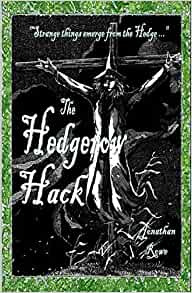




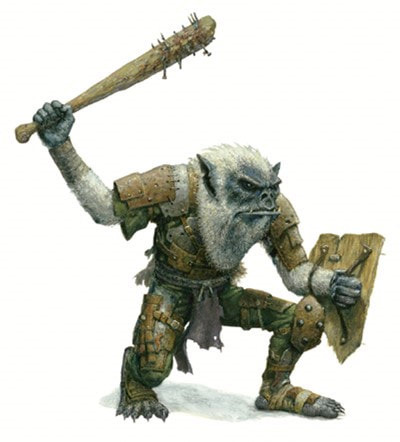




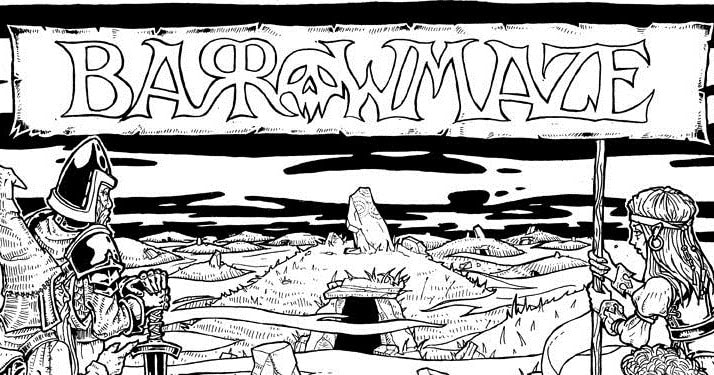




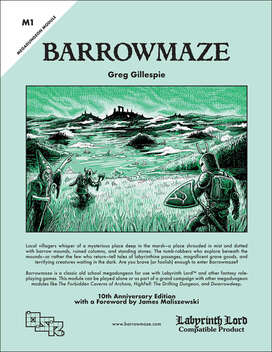




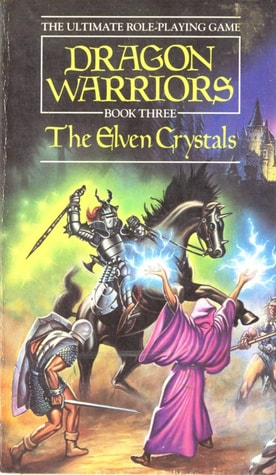



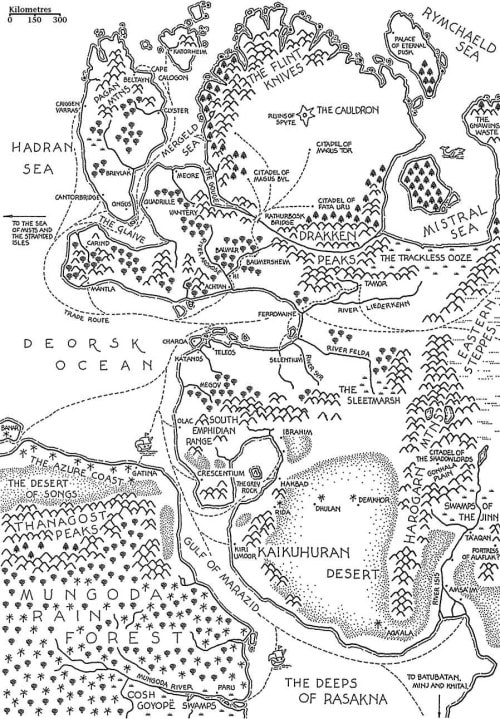
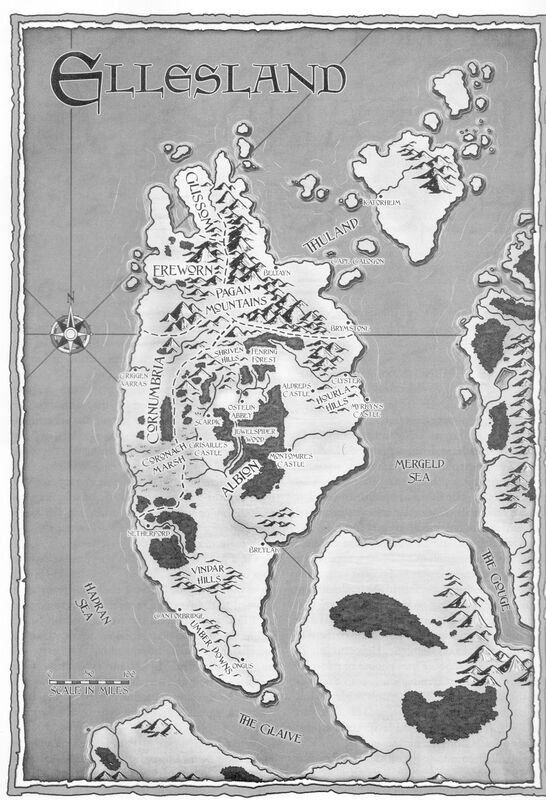



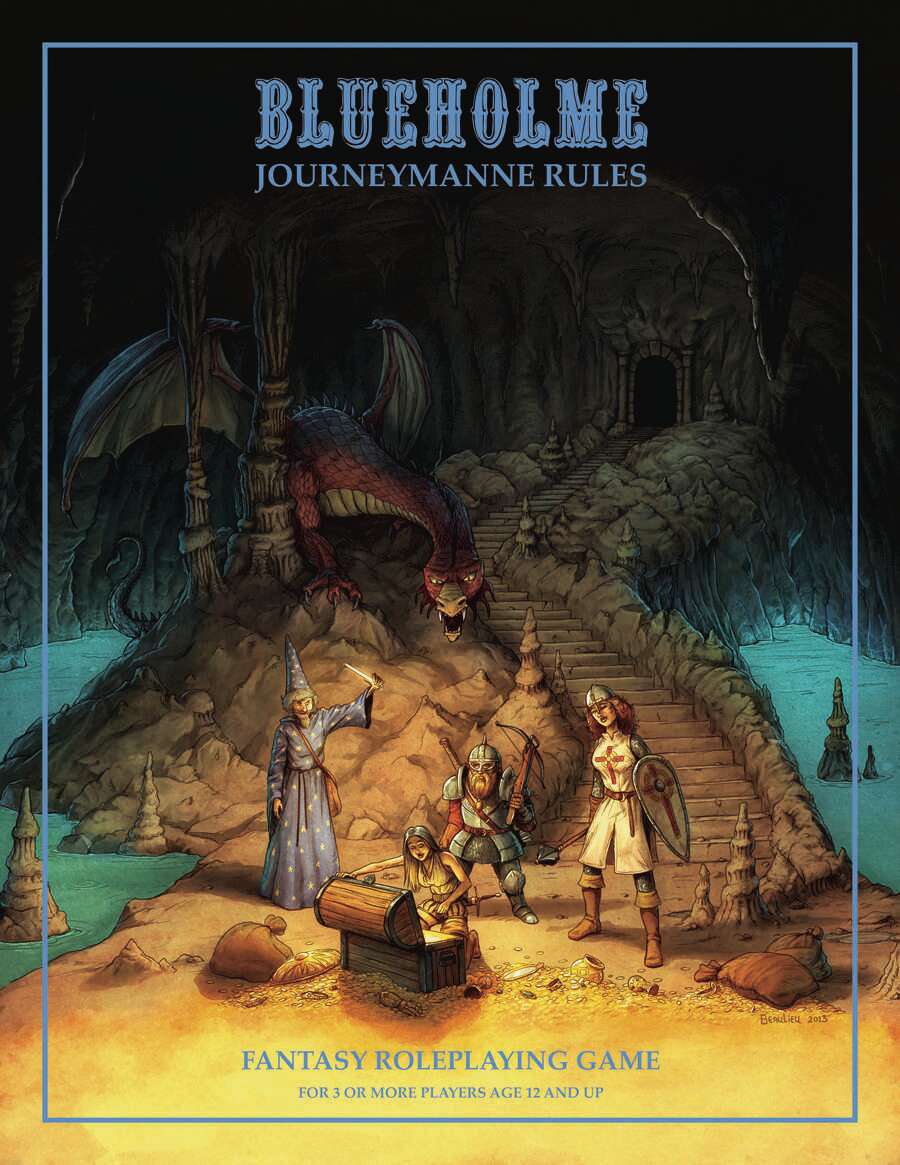

 RSS Feed
RSS Feed


